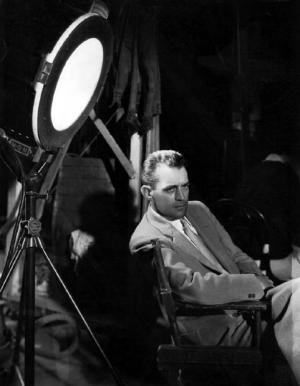
W.S. Van Dyke Net Worth is
 $11 Million
$11 Million
Mini Biography

For the better component of his career, Woodbridge Strong Van Dyke lived up to his sobriquet “One-Take Woody” by steadfastly sticking with his credo of taking pictures each picture as quickly and efficiently as you possibly can. More than his 25-12 months career, he financially aimed over 90 varied entertainments, which not merely preserved the studios huge amounts of cash but ended up being a few of the most interesting movies created during this time period. Van Dyke’s dad, an attorney, died within times of his delivery. By enough time he was three Woody and his mom were pressured to tread the planks of repertory theater to produce a living. When he strike his teens he previously a succession of outdoor careers, including lumberjack, platinum prospector, railroad guy as well as mercenary. In 1916 he was employed by the famous D.W. Griffith as you of several “assistants” (others included Erich von Stroheim and Tod Browning) to focus on the picture Intolerance: Love’s Struggle Through the entire Ages (1916). From then on, his rise was really meteoric. Within a season Woody was directing his very own films, you start with The Property of Longer Shadows (1917). A afterwards western, THE GIRL from the Dugout (1918), highlighted a ‘legitimate’ former Crazy Western world outlaw, the self-promoting teller of high stories, Al J. Jennings. After enlistment in Globe Battle I, Woody came back to Hollywood in the 1920s to immediate further westerns, you start with some Gilbert M. ‘Broncho Billy’ Anderson features at Essanay and afterwards Tim McCoy developers (once, in 1926, he directed two features concurrently). Woody was possibly the initial filmmaker to create westerns that strayed in the stereotypical jaundiced pro-white guy view and only a far more sympathetic portrayal from the American Indian on display screen. Woody’s “One-Take” nickname came into being due to filming globe heavyweight boxing champ Jack port Dempsey in Daredevil Jack port (1920). Dempsey invariably flattened his competitors with the initial punch, so that it became vital to possess the picture “in the can” over the initial take. Because of this, Woody was very much in demand through the entire 10 years for “quota quickie” westerns and serials. Under agreement to MGM in 1928, he followed documentary filmmaker Robert J. Flaherty to Polynesia to collaborate over the feature Light Shadows in the South Seas (1928), overtaking direction completely when Flaherty dropped ill. The achievement of the picture resulted in the thematically very similar The Pagan (1929), shot in Tahiti with Ramon Novarro. This is subsequently accompanied by the epic Investor Horn (1931), filmed on area in remote elements of Kenya and Tanganyika. Powered to the idea of physical exhaustion with the swashbuckling movie director, the 200-solid crew virtually changed the wilderness, creating, since it had been, a live established, replete with incredible animals and vegetation to capture unparalleled footage. Actually, there was a lot excess video footage after launch of “Investor Horn” that a lot of it was integrated into Woody’s following task, the seminal Tarzan the Ape Guy (1932), which arranged the pub for later on entries in to the Edgar Grain Burroughs routine. After another flirt with risk, filming Eskimo (1933) in the remote Bering Strait, Woody resolved down to much less life-threatening assignments. Through the next couple of years, Woody Van Dyke demonstrated his remarkable flair and versatility. After becoming Oscar-nominated for The Prizefighter and the girl (1933), he directed William Powell and Myrna Loy within their 1st outing collectively in Manhattan Melodrama (1934) (most well-known as the film noticed by infamous standard bank robber and killer John Dillinger right before he was shot to loss of life from the FBIl). He adopted this with the trendy and witty thriller The Thin Man (1934) (filmed in accurate Woody-style in 16 times) and its own three sequels, teaming Powell and Loy in another of Hollywood’s most effective partnerships. After these greatly popular films, Woody became similarly adept at musicals, directing just one more powerful duo, Jeanette MacDonald and Nelson Eddy, in the operettas Rose-Marie (1936), Sweethearts (1938) and Naughty Marietta (1935). Hardly ever turning down an project, he also taken care of family members fare (Andy Hardy, Dr.Kildare), public (The Devil Is a Sissy (1936)) and historical dramas (the lavish Marie Antoinette (1938) with Norma Shearer). Unquestionably, among the features of Truck Dyke’s career being a movie director was the initial true “devastation movie”, SAN FRANCISCO BAY AREA (1936), that he elicited wealthy, organic characterizations from his ensemble for 97 a few minutes. Then re-created the 1906 earthquake in the rest of the 20-minute finale, attaining a realism which has seldom been matched rather than surpassed. He was nominated for Academy Honours for both “The Thin Man” and “SAN FRANCISCO BAY AREA”, but dropped from both occasions. A colorful, larger-than-life personality, his “shoot-from-the-hip” camera design was sometimes criticized by his peers. Conversely, he was very much respected by stars, frequently providing breaks to unemployed performers through the use of them in his movies, and appreciated from the studios by regularly to arrive on or under spending budget. Furthermore, he was referred to as a “film doctor”, who be asked to re-shoot specific scenes with that your studio room was dissatisfied (a mentioned example becoming for The Prisoner of Zenda (1937)), or, on the other hand, to shoot extra scenes which were deemed essential for continuity. Like a few of his peers, Woody could possibly be an autocrat who rarely brooked arguments and was recognized to greet the mighty Louis B. Mayer himself with “Hi there, child”. He became sick through the filming of Dragon Seed (1944). Identified as having cardiovascular disease and cancers, he dedicated suicide in Feb 1943.
Known for movies




